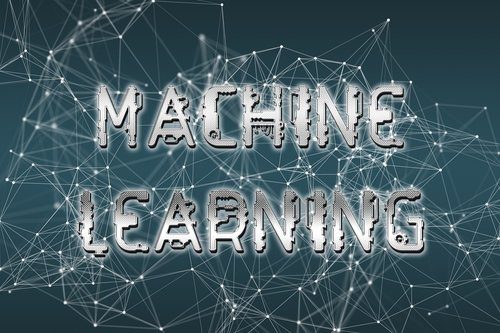
by jsendak | Feb 10, 2025 | DS Articles

In the world of physical assets, the more something is used, the more it depreciates—it wears out, loses value, and eventually needs to be replaced. But in the digital economy, the opposite is true. Welcome to the Marginal Propensity to Reuse (MPR). I introduced MPR in the blog “Mastering the Data Economic Multiplier Effect and… Read More »Transformational Power of Marginal Propensity to Reuse Undermined by Siren of One-off AI Projects
An Examination of the Long-term Implications of Marginal Propensity to Reuse (MPR) and Future Development Possibilities
The digital economy exhibits a unique characteristic that is quite contrary to the wear-and-tear nature of physical assets – the more a digital asset is used, the more its value propels. This intriguing phenomenon is known as the Marginal Propensity to Reuse (MPR). The long-term implications of this attribute and the potential future developments it can precipitate form the crux of our discussion.
Let’s begin by breaking down what MPR is before moving onto its greater significance.
The Conceptual Framework of Marginal Propensity to Reuse (MPR)
Unlike traditional physical entities that depreciate with use, digital assets evolve differently. They have a higher propensity to escalate in value when used repeatedly, attributable to their inherent nature of perpetual reusability. This phenomenon, referred to as Marginal Propensity to Reuse (MPR), has massive potential for value creation.
Long-Term Effects and Future Developments
The continuous utilization and reuse of digital assets have a profound multiplicative effect on data economics. The MPR phenomenon thus plays a strategic role in perpetuating a virtuous cycle of value addition within the digital economy.
- Reduced Resource Consumption: Digital assets can be reproduced without significant resource consumption, contributing to more sustainable practices.
- Cost Efficiency: With MPR, businesses can leverage the same digital asset multiple times, leading to significant cost savings in terms of asset creation and procurement.
- Data Monetization: The use of these reusable assets forms a basis for advanced data monetization strategies that can provide a significant source of revenue.
However, it’s vital to note that the transformative power of MPR can dupe businesses into the trap of one-off AI projects. While AI projects hold promise, organizations should ensure they are not too focused on isolated projects and lose sight of the overarching value of reusable digital assets.
Actionable Advice for Businesses
- Focus on long-term value creation: Businesses should constantly strive to maximize the reusability of their digital assets and not be swayed by the allure of one-off AI projects.
- Develop a robust MPR strategy: Organizations should focus on embedding MPR principles into their business strategies. This helps maximize the value obtained from digital assets and promotes efficient and sustainable practices.
- Embrace Data Monetization: Businesses are encouraged to adopt data monetization strategies, leveraging the constant value addition offered by reusable digital assets. This can form a critical source of revenue.
In conclusion, the Marginal Propensity to Reuse (MPR) forms a fundamental aspect of the data economy’s dynamics and has a massive potential for value creation if harnessed effectively.
Read the original article
by jsendak | Feb 8, 2025 | DS Articles
Tools I use for coding, writing, grammar improvement, research, machine learning experiments, and organizing projects.
Analyzing the Key Points and Devising Future Developments
The text below highlights the usage of different tools for a range of tasks such as coding, writing, grammar improvement, research, machine learning experiments, and organizing projects. It emphasizes the importance of employing these tools efficiently to enhance the mentioned functions.
Long-term Implications and Future Developments
Using these tools can significantly impact the efficiency and productivity of professionals in long-term. As technology continues to evolve, these tools are set to become more advanced, thus promising to offer better support in the respective domains they serve.
In the context of programming, coding tools are likely to embrace machine learning technologies to offer an automated coding system that simplifies and speeds up the development process.
In writing and language improvement, artificial intelligence stands a chance to completely revolutionize the process. The future might witness the development of advanced grammar tools that identify writing style, suggesting changes that improve readability while maintaining writer’s unique voice.
For research, the future promises more comprehensive and advanced research tools that are likely to harness AI-based metadata analysis that improves the relevance and accuracy of search results.
Machine learning experiments will witness significant advancements as deeper integration with cloud computing and Big Data becomes more ubiquitous.
Lastly, project organization tools are set to harness AI technologies to automate scheduling and resource allocation, and prediction of potential risks and delays, thereby enhancing overall project management.
Actionable Advice
- Invent in Skills Upgrading: As technology gets advanced, so should your skills. Diffusing your skills with the latest technological know-how should be your primary strategy.
- Keep up with the Tech Trends: Monitor and align with the advancements in technology to optimize the use of your tools and increase productivity.
- Prioritize AI integration: As Artificial Intelligence becomes increasingly prevalent, prioritizing its integration into your tool set can yield significant productivity and efficiency gains.
- Embrace Automation: Automation is the future of task completion. Automating repetitive tasks frees up valuable time that can be utilized for more creative and complex tasks.
- Adaptivity: With the dynamic nature of technology, adaptability is key to aligning with the perpetual tech changes.
- Security Consciousness: As the use of digital tools increases, so does cyber vulnerability. It is critical to always consider the security aspects whenever employing new tools.
In conclusion, with continuous evolution of technology, it is important to foresee changes and adjust your professional toolkit accordingly. This will not only help in increasing productivity but also in staying ahead of the curve.
Read the original article

by jsendak | Feb 8, 2025 | DS Articles

In the blog “Driving Relevant GenAI / LLM Outcomes with Contextual Continuity,” I introduced the concept of contextual continuity as a technique for getting your Generative AI tools like ChatGPT or CoPilot to deliver more relevant and accurate responses. Contextual Continuity refers to the ability of a Generative AI (GenAI) system, such as ChatGPT, to… Read More »Mastering GenAI Contextual Continuity – Part 2: Farming Example
Contextual Continuity and Generative AI: A Future-Steady Approach
In recent times, the blog “Driving Relevant GenAI / LLM Outcomes with Contextual Continuity” introduced the essential concept of Contextual Continuity and its significant impact on Generative AI tools. Essentially, it relates to the ability of a Generative AI (GenAI) system to deliver more consistent, appropriate and accurate responses. Considering the exponentially growing field of AI, this is a pivotal development that could shape the future use of AI in various fields.
Long-Term Implications
Increased Accuracy and Consistency
The long-term implications of mastering contextual continuity in GenAI are profound. Primarily, we can expect an improved level of accuracy and consistency in responses. As AI becomes more capable of understanding and maintaining the context, it can provide more appropriate and accurate responses even in complex situations. This can significantly improve user experience and increases the applicability of AI across industries.
Enhanced adaptability
Contextual continuity paves the way for GenAI systems to adapt better to changing scenarios. As these systems better understand the context, they can adjust their responses accordingly. This adaptability could critically enhance the real-world applicability of Generative AI, enabling it to cater to a broad spectrum of use-cases and adapt to the particular nuances of distinct industries.
Future Developments
Contextual Continuity can significantly shape the future advancements in AI. We can anticipate:
- Widespread Application: The development of a GenAI system that can perfectly understand and maintain the context of conversations or tasks can find usage in numerous industries – from customer service chatbots to highly sophisticated AI assistants.
- Improved Personalization: Advanced AI systems, with a better understanding of the context, could provide enhanced personalization, delivering unique experiences based on user behavior and preferences.
- Real-time Adaptation: With GenAI systems mastering Contextual Continuity, we may witness advanced AI that can adapt in real-time to changing scenarios and respond accordingly. This feature could be a game-changer in fields like medical diagnosis or high-stakes negotiation.
Advice
For organizations striving to harness the potential of GenAI systems, it is crucial to focus on contextual continuity as it will play a pivotal role in AI’s proficiency. Here is some advice to heed:
- Invest in Continuous Learning: The concept of Contextual Continuity requires GenAI to have a deep understanding. Therefore, it is critical to invest resources in continuous learning to feed and improve AI’s capabilities.
- Test Rigorously: Carry out thorough testing processes to ensure AI’s ability to adapt and work in various plausible scenarios and that it maintains its reliability across all of them.
- Regularly Update: Update your GenAI systems regularly. Technology and AI are rapidly evolving fields, and staying up-to-date with the most recent advancements is the only way to stay relevant.
Read the original article
by jsendak | Feb 7, 2025 | DS Articles
Interact with the advanced multimodal Llama model locally through its intuitive user interface or powerful endpoint service.
Deep Dive into the Advanced Multimodal Llama Model
The advanced multimodal Llama model serves as a groundbreaking tool to interact with technology. It enables local interaction through its intuitive user interface or via its robust endpoint service. Let’s break it down and delve deeper into the potential long-term implications and forecasted future developments.
Long-Term Implications
- Improved User Interaction: With the advanced multimodal Llama model, the user interaction experience will drastically improve. This system enables an extremely intuitive local interaction process, enhancing user experience and engagement.
- Powerful Endpoint Service: The model provides a powerful endpoint service, bolstering the efficiency and effectiveness of data exchange. It allows a solid foundation for the implementation of more comprehensive features and offerings in the future.
- Greater Accessibility: By enabling local interactions, this model potentially amplifies accessibility to a wider range of users, even those with a lower degree of technical savviness.
Possible Future Developments
- Increased Integration: With the usage of the Llama model gathering momentum, we can expect to see increased integration with other systems and applications.
- Advancements in User Interface: Given the intuitive nature of the user interface, it sets the stage for further advancements and refinements, making it more user-centric.
- Solution Customization: Using the power of the endpoint service, developers could provide more customized solutions to meet the specific needs of different user groups.
Actionable Advice
- Learn and Adapt: Users and developers should strive to familiarize themselves with this new technology to harvest its potential benefits.
- Feedback: Users should provide feedback to help make the service more user-centric and intuitive.
- Stay Updated: It’s essential to stay abreast of the latest developments. This could provide advance insight into the necessary upgrades.
- Develop Custom Solutions: Leveraging the advanced features in the Llama model, developers should consider crafting custom solutions that cater to sector-specific needs.
Understanding and utilizing the advanced multimodal Llama model to its full potential could drastically enhance technological interactions and solutions. It can serve as a foundational tool with potential for increased personalization, accessibility and efficiency in the long term.
Read the original article

by jsendak | Feb 7, 2025 | DS Articles

Although it’s rarely publicized in the media, not everything about deploying—and certainly not about training or fine-tuning—advanced machine learning models are readily accessible through an API. For certain implementations, the success of enterprise-scale applications of language models hinges on hardware, supporting infrastructure, and other practicalities that require more than just a cloud service provider. Graphics… Read More »Underpinning advanced machine learning models with GPUs
Analyzing the Crucial Role of Hardware and Supporting Infrastructure in Deploying Advanced Machine Learning Models
While the media often magnifies the role of APIs in deploying machine learning models, many critical elements deserve attention. The success of large-scale applications of language models depends not only on accessible APIs but also on hardware components, a supportive infrastructure, and other practical aspects. These elements often necessitate more reliance on a comprehensive cloud service provider, rather than a simple API structure.
More than an API: The Need for a Solid Back-end Infrastructure
APIs might streamline the process of accessing and deploying machine learning models, but they just make up a part of the process. However, the underpinnings- the graphics processing units (GPUs), robust supportive infrastructure are what truly power such advanced models. When deploying on a large, enterprise-scale, this backbone becomes even more essential.
Potential Future Developments
Given this realization, it’s likely that future developments will focus more on strengthening and advancing these back-end components. More efficient GPUs and stronger cloud service infrastructures will be the cornerstone to handle increasingly complex machine learning models.
How to Prepare for These Changes
Given the long-term implications of these findings, companies and individuals interested in deploying advanced machine learning models should focus on the following steps:
- Invest in capable hardware: Owing to the increased workloads of machine learning models, investing in high-performance GPUs has become a necessity. Future-proof your system by opting for hardware that can support the ongoing advancements in machine learning.
- Choose a strong cloud service provider: APIs may provide the interface, but a strong cloud service provider will provide the supporting infrastructure crucial for successful deployments. Choose providers that not only offer extensive functionality but also ensure high reliability and robustness.
- Stay updated on AI advancements: As AI and machine learning continue to advance, staying updated with the latest trends and developments ensures preparedness for any system-related adjustments and overhauls.
“Shifting the focus from simply deploying machine learning models via APIs to developing a stronger infrastructure for these models will prove most beneficial in the long run.”
Take the above points into consideration when designing a strategy for the implementation of enterprise-scale machine learning models. Investing in the right hardware, partnering with a robust cloud service provider, and staying on top of AI trends will ensure the successful deployment and long-term efficiency of your machine learning applications.
Read the original article
by jsendak | Feb 5, 2025 | DS Articles
This article explores various strategies for managing outliers to ensure accurate and robust statistical analyses.
Managing Outliers for Robust Data Analysis: Future Prospects and Long-term Implications
In an increasingly data-driven world, the importance of robust statistical analyses cannot be overstated. Handling outliers, or anomalous data points that stray from the rest, is a fundamental aspect of this process. A well-strategized approach to managing outliers ensures the accuracy of data interpretations and resultant decision-making.
Long-Term Implications
With the explosion of big data, outlier management is set to become even more critical. Outliers can dramatically impact mean values, skew distributions, and consequently influence predictive models. This could lead to erroneous decisions with significant financial and strategic implications for businesses.
Moreover, as industries lean into AI and machine learning, the issue of outliers will come front and center. Machine learning algorithms are heavily dependent on data quality, and outliers can significantly affect their performance accuracy. Furthermore, as Internet of Things (IoT) devices proliferate, generating big data, proper outlier management will become crucial.
Possible Future Developments
There are promising prospects in outlier detection and handling. Artificial Intelligence (AI) will likely play an instrumental role. Machine learning algorithms could be trained to detect outliers and determine whether they’re merely noise or represent significant events. Moreover, developments in robust statistical methods can lessen the impact of outliers on analyses without removing them from the dataset.
Actionable Advice
- Invest in Outlier Detection: Organizations dealing with large datasets must invest in outlier detection tools and resources. This will help maintain the accuracy of their statistical analyses and business decisions.
- Employee Training: Staff members responsible for data handling must be trained on the importance of outlier management, and how best to handle such scenarios. As the adage goes, knowledge is power.
- Robust Statistical Methods: Consider using robust statistical methods that are not as affected by outliers for your analyses. These could include techniques like medians and interquartile ranges, instead of mean and standard deviation.
- AI and Machine Learning: Leverage AI and machine learning for better outlier detection and handling. AI presents us with the unique opportunity to autonomously find and classify outliers, hence improving accuracy and reducing manual labor.
In the age of big data, a strategic approach to managing outliers is not just beneficial – it’s essential. It’s about time we gave outliers the attention they deserve, for outlier management can be the defining factor between inaccurate data interpretations and robust, reliable statistical analyses.
Read the original article



